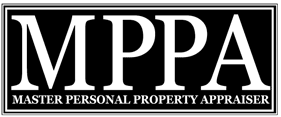You are herePurpose of Appraisals / Tax and Insurance Planning*
Tax and Insurance Planning*
Tax Planning
In the United States, corporate sales tax planning may include the following:
- Determination of ways to legally reduce the amount of tax due on a transaction. For instance, how a company structures its invoices can affect the taxability of the entire transaction. Each U.S. state has different rules for applying sales tax. Some states laws are more advantageous to taxpayer for certain types of transactions. If a business operates in several states, choosing the best state to take delivery in can reduce or eliminate sales tax liability. In many states an item can become taxable if not separately stated on the invoice.
- Review of company purchases to determine which assets may qualify for exemptions. Finding overlooked exemptions often results in significant savings.
- Periodic review of procedures relating to Sales & Use Tax data gathering and retention so that proper supporting documentation, including exemption and resale certificates, are available in the event of a State audit.
Insurance Planning
In the property and casualty insurance industry, Actual Cash Value (ACV) is a method of valuing insured property.
Actual Cash Value (ACV) is computed by subtracting depreciation from the replacement cost. The depreciation is usually calculated by establishing a useful life of the item and determining what percentage of that life remains. This percentage times the replacement cost gives the ACV.
As an example: a man purchased a television set for $2,000 five years ago and it was destroyed in a hurricane. His insurance company says that all televisions have a useful life of 10 years. A similar television today costs $2,500. The destroyed television had 50% (5 years) of its life remaining. The ACV equals $2,500 (replacement cost) times 50% (useful life remaining) or $1,250.
This concept is different from the book value used by accountants in financial statements or for tax purposes. Accountants use the purchase price and subtract the accumulated depreciation in order to value the item on a balance sheet. ACV uses the current replacement cost of a new item.
[edit] Other methods of insurance valuation
Insurance policies may be purchased utilizing several different valuation methods. These include: Replacement Cost Value (RCV), Fixed Value (Guaranteed Replacement Cost) and Actual Cash Value (ACV). Some policies will use different valuation methods depending upon the item. For example, the building may be insured at Replacement Cost Value, the most of the contents insured at Actual Cash Value and a few specific items at a Fixed Value (antiques). Policies may also include co-insurance clause or deductibles provisions which will impact the actual cash paid out by the insurance company.
* Taken from Wikipedia.org. For more information, click HERE and HERE
Reliable, Timely Service


